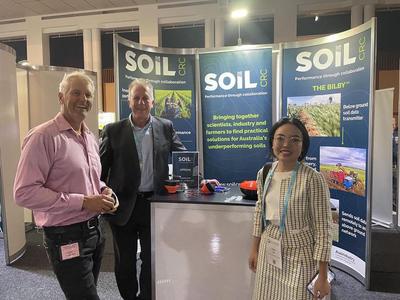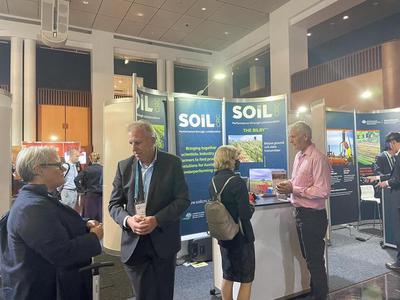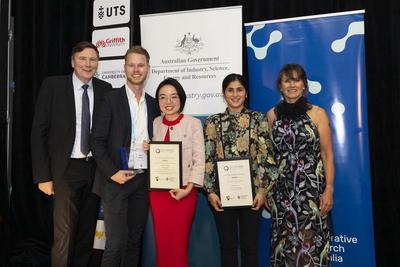Vision for 2051: An early career soil scientist perspective

It’s the year 2051, investing in soils is now universally accepted as investing in our future. New antibiotics are being discovered from soils that fight off superbugs and growing crops in space has unlocked new insights for improving productivity and profitability here on earth. Soil, once a boring subject to most people, has now become an integral part of Australian life, celebrated as our connection to nature. This is just a series of successes that we’ve witnessed in soil science since the release of Australia’s first national soil strategy in 2021, which set out how we are going to value, manage and improve our soils. We have reached the Ag2030 goal of growing agriculture to $100 billion. The twenty-year national soil strategy which concluded in 2041 ensured that soils are recognised for their roles in regulating earth-systems processes, ecosystems provisioning, and archive of history and culture besides food production. In a highly connected world of digital agriculture, facilitated by data stewardship and governance, precision and smart agricultural innovations are implemented to assist each step of food production and consumption in its global supply chain. Carbon sequestration with the 4 per mille initiative also played a fundamental role in Australia achieving its net-zero pledge five years early in 2045.
All these had seemed somewhat unattainable 30 years ago when I started my career as a soil scientist when the world is in the third year of combating the global pandemic, COVID-19, which exposed deep-seated inequalities and forced nations to re-evaluate the way we value health, wealth and opportunities. The Russia-Ukraine war created further uncertainties in supply chains and food security. Here in Australia, major flooding has taken dozens of lives and damaged many people’s homes and properties, after just coming out of the worst droughts and bushfires in history. Humanity is faced with its greatest challenge to date, the climate crisis, and what had once been biblical has now become commonplace.
To achieve the vision in 2051, it is imperative that we transition from a capital-oriented transactional economy to a value- and vision-oriented society. Capitalising the climate transition and reorient the market to achieve a green economy present immense opportunities for Australia. More importantly, as a developed nation with world-class research, Australia has a responsibility to lead and drive down the costs of new technologies and facilitate their transition and application at scale in less developed nations.
We must take a long-term view of our research investment, addressing the urgent needs of the industry but more importantly, identifying the fundamental challenges that we need to overcome. This requires the emphasis on practical outputs with linkages to the fundamental understanding of the systems we operate in. This is especially important in my field of soil science where long-term investment is critical to improve soil stewardship, test innovative technologies, increase soil organic matter, enhance soil health, and improve productivity and the capacity of our soils. Collaborative research that brings industry, university and government together to discover new research avenues and connect disciplines is absolutely critical. Soil CRC, of which I’m proudly a part of, is arguably the largest collaborative cohort for soil science in Australia, enabling transformative research that our industries and societies demand to improve soil health and productivity.
We need to value diversity and build a more inclusive and supportive culture by improving the female representation, and developing the capability of tomorrow. This will undoubtedly bring new insights and lead to improved productivity. FAO estimates that if women globally had the same access to resources as men, they could increase the productivity of their farms by 20-30 per cent! Here in Australia, female academic staff above level C only account for 23% while females account for more than 50% of undergraduates and postgraduates in the agricultural and environmental studies. This represents a loss of expertise and waste of knowledge that we should tap into.
It is also paramount that we better communicate science to the finance sector and policy-makers to enable the cultivation and adoption of innovations by the industries and societies at large. From a soil science perspective, this means that soil amelioration should not be seen as a cost for growers rather than an invest in our natural capital that has benefits overflowing into the social economic and environmental aspects of the society. Our growers are long recognized as the most innovative in the world and our soil science research is world-class, so we should financially and policy-wise, better enable them to adopt the innovations required to improve our agricultural systems.



